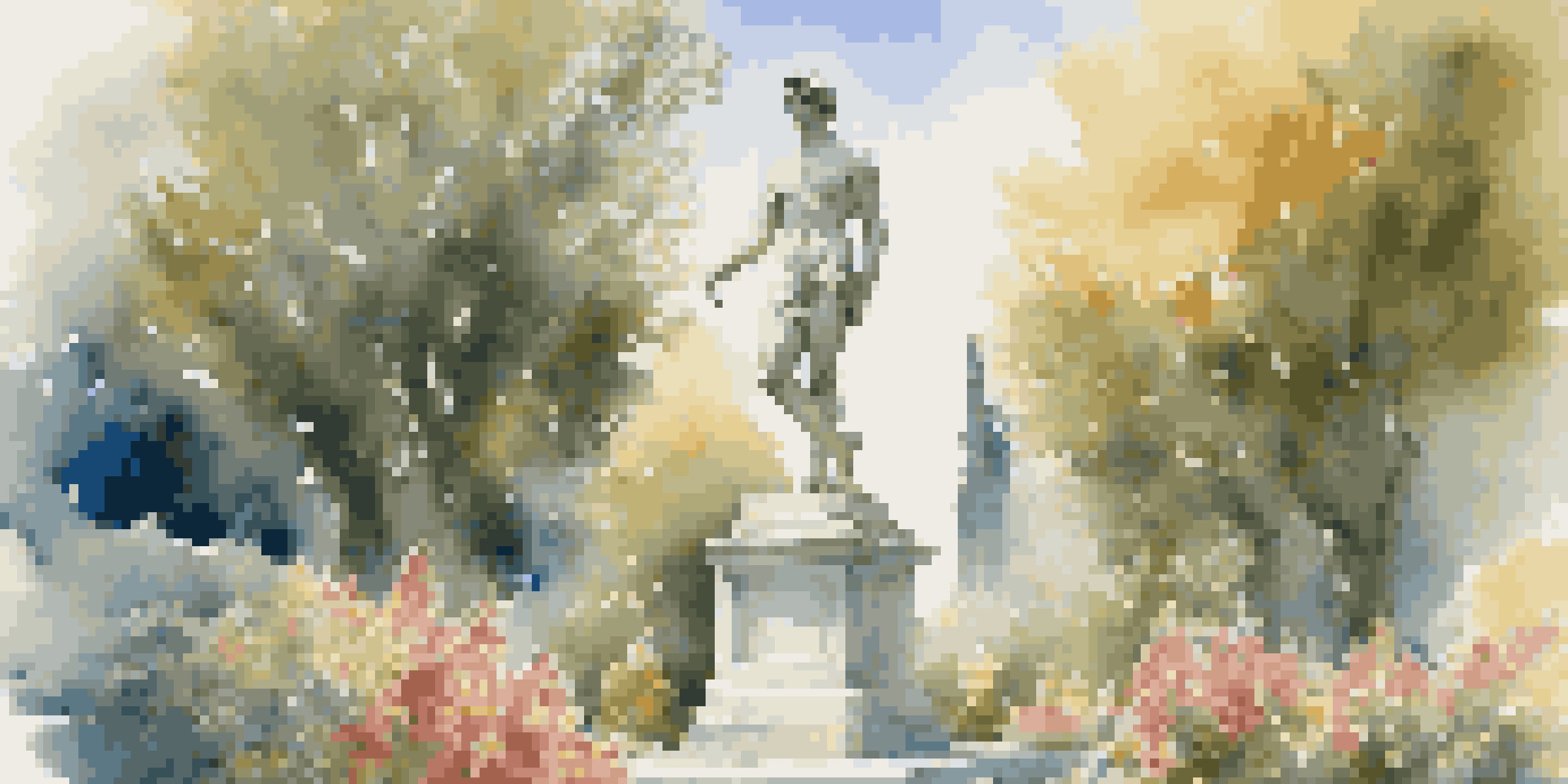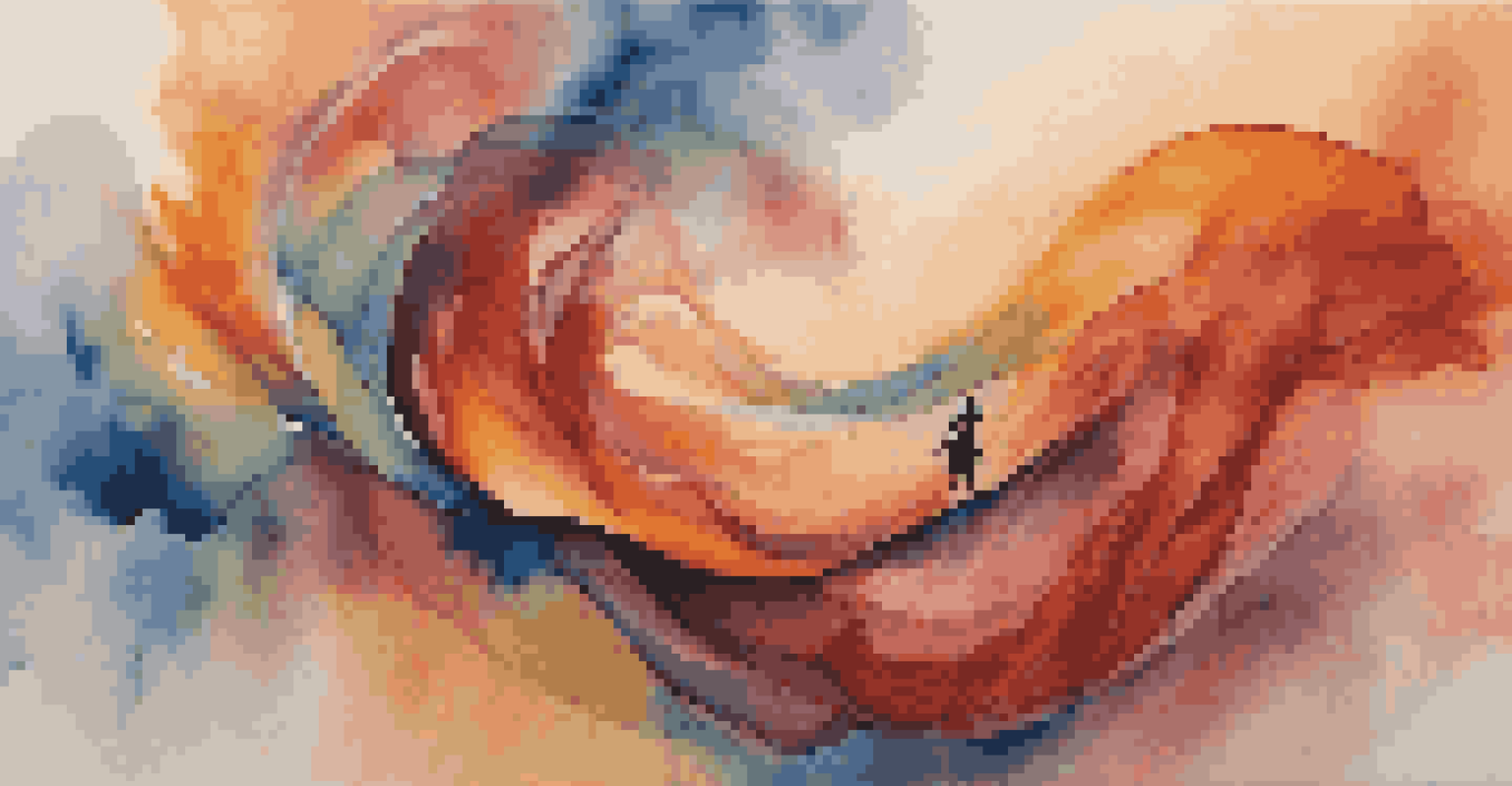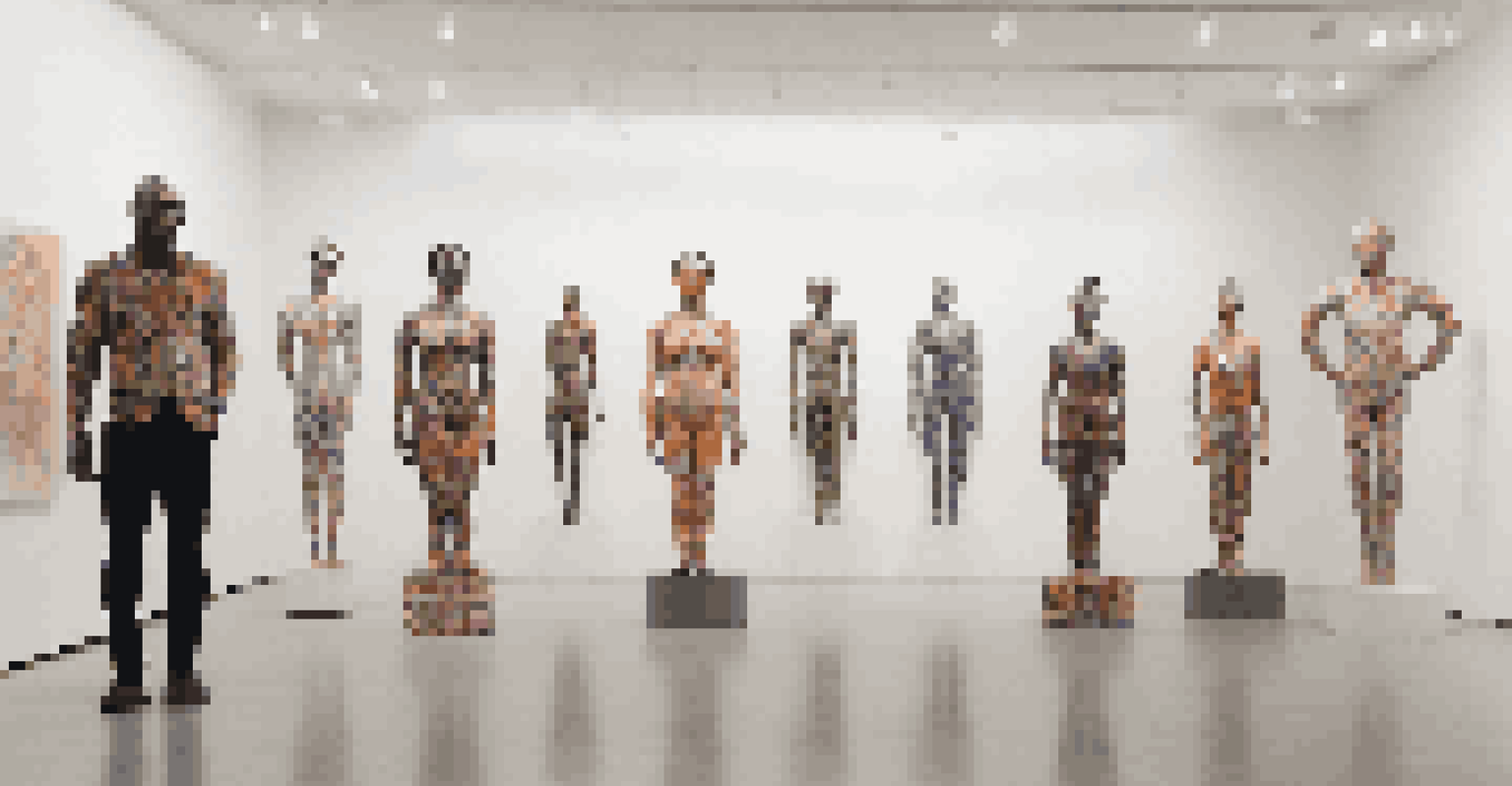The Human Body in Art: A Reflection of Cultural Values

The Body as a Canvas: Early Artistic Expressions
From the earliest cave paintings to ancient sculptures, the human body has served as a canvas for artistic expression. These representations often depicted not just physical features but also cultural beliefs and societal norms. For example, the Venus figurines of prehistoric Europe emphasized fertility and femininity, showcasing early humans' values around reproduction.
Art is the most beautiful of all lies.
As civilizations evolved, so did their artistic interpretations of the body. Ancient Greeks celebrated the idealized human form, reflecting their values of beauty, balance, and physical prowess. This was evident in marble statues and pottery that highlighted athleticism and divine proportions, embodying their admiration for both art and human achievement.
These early artistic expressions set the stage for future representations of the body in art, making it clear that cultural values play a significant role in how we perceive and depict ourselves. The human form became a mirror reflecting the ideals, aspirations, and even anxieties of different cultures through time.
Cultural Symbolism: Bodies in Religious Art
Religious art often employs the human body to convey deeper spiritual meanings. In Christian iconography, for instance, the depiction of Christ's body, from the crucifixion to the resurrection, symbolizes sacrifice, redemption, and hope. Artists like Michelangelo infused their works with emotion, inviting viewers to connect with the divine through the human experience.

Similarly, Hindu art celebrates the human form through intricate sculptures of deities, where each posture and feature conveys specific attributes and stories. The body becomes a vessel for spiritual narratives, reflecting the culture's values around divinity, morality, and the cosmos. This artistic tradition underscores the importance of the body in bridging the gap between the earthly and the divine.
Art Reflects Cultural Values
Throughout history, the human body in art has mirrored the cultural beliefs and societal norms of different civilizations.
Thus, religious art not only showcases the body but also serves as a powerful medium for cultural storytelling. Through these representations, communities find a shared language that communicates their beliefs and values across generations.
Renaissance Realism: A Shift in Perspective
The Renaissance marked a pivotal moment in the depiction of the human body, emphasizing realism and anatomical accuracy. Artists like Leonardo da Vinci and Raphael studied the human form meticulously, aiming to capture not just its external beauty but also its inner workings. This shift reflected a growing interest in science, humanism, and the individual, reshaping cultural values across Europe.
The body is a canvas for the soul to express itself.
With the advent of techniques like chiaroscuro, which uses light and shadow to create depth, artists brought their subjects to life. The human body became a focal point for exploring themes of emotion and psychology, moving beyond mere representation to convey complex human experiences. This change highlighted the Renaissance belief in the potential of humanity and the importance of individual expression.
As a result, the Renaissance laid the groundwork for future artistic movements. The reverence for the human body continued, but it evolved to reflect a richer, more nuanced understanding of what it means to be human.
Impressionism: Capturing Fleeting Moments
In the late 19th century, Impressionism emerged as a movement that sought to capture the ephemeral nature of life, including the human body. Artists like Claude Monet and Edgar Degas portrayed figures in natural settings, emphasizing movement and light rather than rigid forms. This approach reflected a cultural shift towards valuing experience and perception over traditional techniques.
The human body was often depicted in everyday situations, showcasing the beauty of ordinary moments. This focus on the mundane invited viewers to appreciate life's transient qualities, encouraging a deeper connection with the world around them. In essence, Impressionism celebrated the human experience in its most authentic form, reflecting a cultural yearning for realism and emotional resonance.
Religious Art and Spirituality
Religious art uses the human body to convey profound spiritual meanings, connecting communities through shared narratives.
This movement not only transformed how artists approached the human body but also influenced broader cultural attitudes toward art and life. The emphasis on capturing fleeting moments underscored the value of individual experience, which resonated deeply with a rapidly changing society.
Modernism: Breaking Boundaries
The Modernist movement of the 20th century challenged traditional representations of the human body, breaking away from established norms. Artists like Pablo Picasso and Henri Matisse experimented with form and abstraction, reflecting the complexities of modern life. This shift mirrored cultural upheavals, such as industrialization and the questioning of societal norms.
In this context, the body became a subject of exploration rather than mere representation. Abstract forms and distorted figures often conveyed emotions, societal tensions, and personal experiences, leading to a deeper understanding of human identity. This transformative approach emphasized that the human experience cannot be confined to a singular narrative or form.
Modernism, therefore, opened the door for diverse interpretations of the body in art. It encouraged artists to reflect their unique cultural backgrounds and personal experiences, celebrating the richness of human diversity.
The Body in Contemporary Art: A Social Commentary
In contemporary art, the human body often serves as a powerful tool for social commentary. Artists like Marina Abramović and Yoko Ono use their bodies as mediums to challenge societal norms, question power dynamics, and explore issues like gender and identity. Their work reflects a culture increasingly focused on inclusivity and representation.
Contemporary artists frequently address themes such as body image, sexuality, and the impact of technology on our physical selves. Through installations, performances, and multimedia projects, they invite audiences to engage with these pressing issues. This artistic approach not only reflects cultural values but also encourages dialogue and introspection in society.
Modern Art Challenges Norms
The Modernist movement broke traditional boundaries in representing the human body, reflecting the complexities and diversity of modern life.
Thus, the human body in contemporary art becomes a site of resistance and empowerment. It emphasizes the ongoing evolution of cultural values and the importance of diverse voices in shaping our understanding of identity.
Conclusion: The Enduring Significance of the Human Body in Art
Throughout history, the human body has been a central theme in art, serving as a reflection of cultural values and societal changes. From early representations to contemporary expressions, artists have used the body to explore themes of beauty, identity, spirituality, and resistance. Each era's interpretation offers insights into the cultural psyche, revealing what societies hold dear.
As we navigate an increasingly complex world, the representation of the body in art continues to evolve. It serves as a reminder of our shared humanity and the diverse experiences that shape our lives. The ongoing dialogue between art and culture highlights the importance of understanding and appreciating different perspectives.

Ultimately, the human body in art is more than just an aesthetic subject; it is a profound reflection of who we are as individuals and as a society. By examining these representations, we gain a deeper understanding of ourselves and the cultural values that guide our lives.